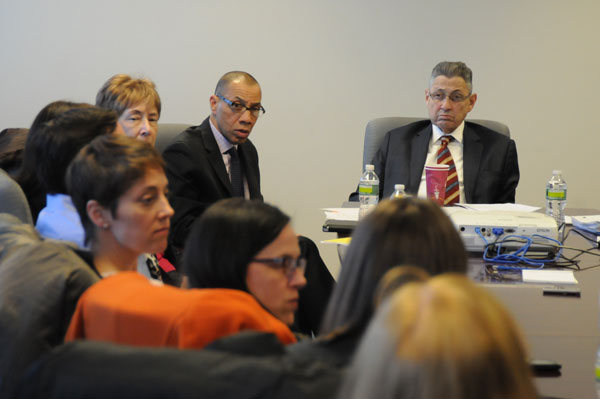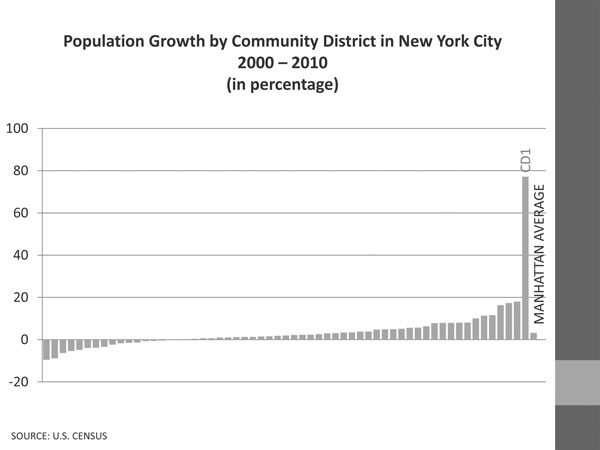
BY JOSH ROGERS | It was a typical meeting about the need for more schools in Lower Manhattan with one big difference. This time, it seemed like someone in power heard the message completely.
Schools Chancellor Dennis Walcott told Downtown school advocates that he’d let them into the Department of Education’s planning room to help influence the upcoming five-year plan to build more schools.
This came after many years of Dept. of Education officials rebuffing pleas to take a closer, neighborhood by neighborhood look at the soaring population.
“I think there’s an opportunity to break off into smaller subgroups… to work with our folks and really do the deep dive that you are talking about,” Walcott told the advocates at Assembly Speaker Sheldon Silver’s school overcrowding task force meeting April 4.
Silver and other members of the committee said it was a sea change.
“I think it’s new for us because before that, we’ve heard about moving children from here to [north of] Canal St., which is a totally different neighborhood,” Silver said.
Task force members have been saying for years that the education department’s grouping of neighborhoods underestimates the desperate need for schools in Lower Manhattan.
Tricia Joyce, a member of the task force, said she remembers that five years ago, city officials said they would take a closer look, and it did lead to opening temporary “incubator” space early for two new Downtown schools, but this was the first time she ever remembered being invited into smaller planning meetings.
She was part of a four-member tag team that presented the numbers to Walcott two weeks ago.
Even Shino Tanikawa — a parent leader who has tried to manage the school crowding and zoning battles as president of the School District 2’s Community Education Council — said she was staggered to see Eric Greenleaf’s analysis that Lower Manhattan will need an additional 1,200 school seats in a few years.
“I’m quite shocked to see the numbers, Eric,” said Tanikawa. “I knew things were bad but this is quite frightening.”
Greenleaf, who has been tracking school population numbers for years, has determined that you need 60 kindergarten seats for every 100 births in the Community Board 1 area (roughly the area south of Canal St).
Tanikawa said a 60 percent public school enrollment rate is extremely high for School District 2, which stretches from Lower Manhattan to the Upper East Side. “In other neighborhoods, that’s a very different number. In the Village, it’s about 35 percent.”
Walcott stared so attentively when speakers at the meeting talked about population specifics, that he did not seem to notice anyone else in the room.
Lower Manhattan’s elementary school principals updated Walcott on the wait list numbers for this September — 148 at three schools.

Then he heard about Community Board 1’s analysis of recent Census date showing that the preschool population shot up by 170 percent in Lower Manhattan from 2000 to 2010.
Board 1’s Diana Switaj, who prepared the report, updated it for the meeting with a chart showing that the overall C.B. 1 population growth towered over all other community boards in the city.
Walcott did volunteer that he was unlikely to remain chancellor after Mayor Bloomberg leaves office in January, but said now was a “golden opportunity” to shape the capital plan.
Catherine McVay Hughes, chairperson of Board 1, had a simple response to Walcott’s invitation: “That’s wonderful news.”

















